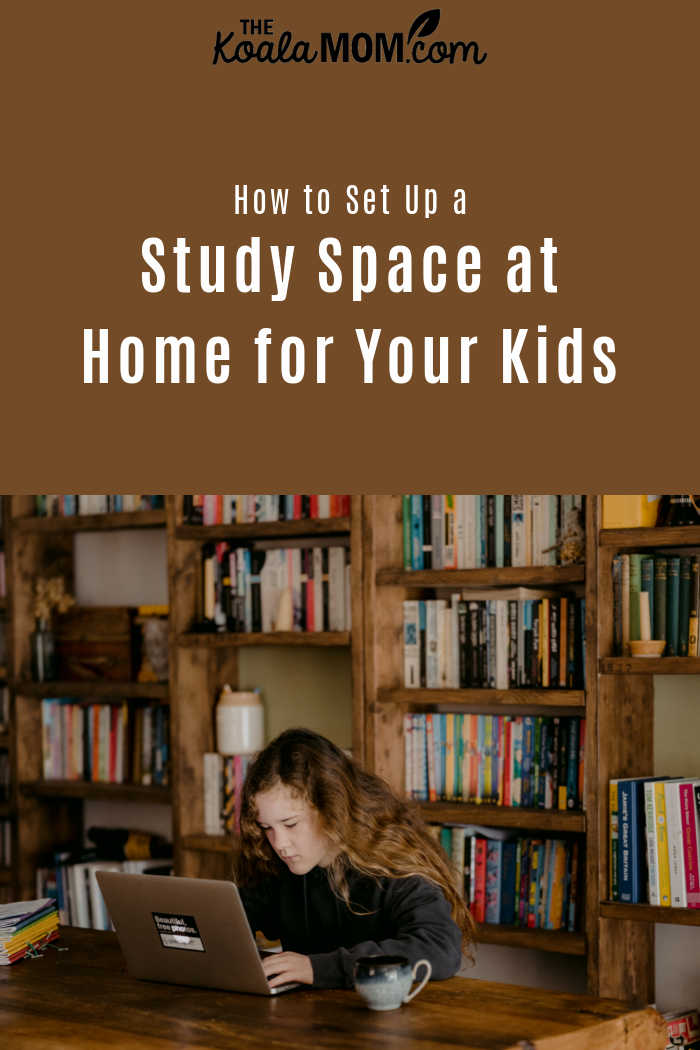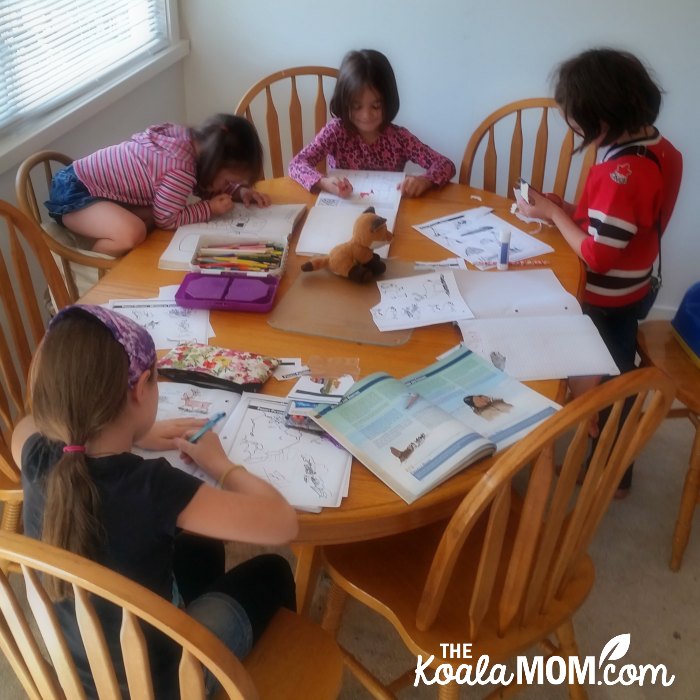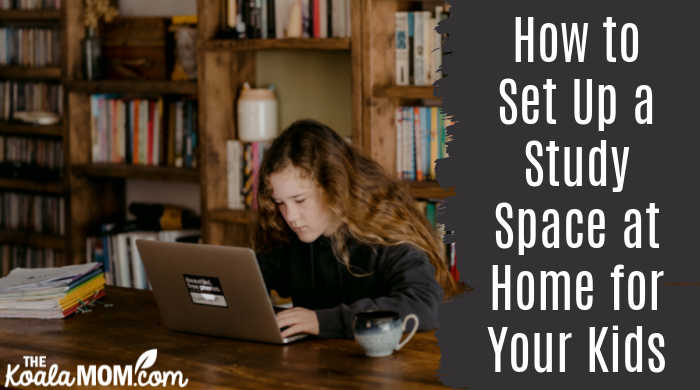As most parents and educators know, it’s important to create a colourful, engaging, and educational space in the classroom for your kids to thrive. However, it is just as important to create a welcoming learning space at home where your children can focus properly on whatever homework they need to get done. A dedicated home study space can help to cultivate your child’s creativity, sharpen their focus, and make them more motivated to read and to learn.
With the right approach, you can easily create an impactful learning space with comfortable office chairs, plenty of light, an accessible workspace and everything else that your kids need to succeed. Just a little bit of creativity and planning will go a long way in helping your children to concentrate on what they are studying and improve their learning.
Let’s take a look at why home learning spaces matter and how you can develop the right study space for your kids that will provide them with the learning environment they need.

This post contains affiliate links; as an Amazon associate, I earn from qualifying purchases.
Why Learning Spaces Matter
Most children can’t simply sit on the couch and learn. Despite its comfort and convenience, the living room couch may not be the best option for young children, who like to wiggle and squirm but also need some routines to help them focus and study. Without a designated learning area, they can be easily distracted, their supplies may be far away, and they will not be consistent with their studies.
By dedicating a special study space to your child, you will encourage learning skills and create a culture of learning that will last a lifetime. I’ve found my children work best at a table or desk and prefer to have such a space for themselves.
As 5 Minutes for Mom shared, “Even my son quickly recognized that doing his homework upstairs in his room did not work for him. One’s brain associates certain spaces with specific activity. His room is generally for sleeping or reading or relaxing. I’ve read that just sitting down in a designated space can get a person more ready to do that activity. So having a designated study space can make it that much easier to buckle down to the task at hand.”
Have a Space Just for Learning
Most families cannot afford an extra room devoted to learning; however, this should not be a problem. Take some time to think of all the exciting and easy ways you can create your own space, even if it’s the dining room table. Consider consistency rather than square footage and actual space. Dedicated classrooms are great, but you can also create flexible learning spaces if your home is not that spacious.
For example, you can pull out the same folding chairs and tables every time you need to learn, or you can create a learning box that you can bring to the kitchen table every day. One of my daughters liked to use a lap desk in the living room for her study space. When it comes to home study, it’s important to establish and stick to specific routines and spots where your child can learn. This creates structure and routine, which is crucial when it comes to encouraging your kids to study at home.
For the first seven years of our homeschooling, we learned at the dining room table. In one home, I had a small cabinet nearby with our homeschool books and learning materials, and I put an alphabet poster around the ceiling. We even had a small chalkboard on the wall. When we moved into our condo, I reorganized our homeschool room with a different bookshelf that kept our books more organized but still close by. A big window added light, a few houseplants added a touch of green, and a beach picture added some calming vibes.

If your study space is doing double-duty as a dining room or other space too, professional organizer Margaritta Ibbot shares these tips: “When you are re-organizing and creating a space for a dual purpose (such as a family room/school room), you have to make sure that all of the items that don’t belong there are gone. So if you decided that you want to have your study space for your children in the seldom used dining room, you need to ensure that there are no toys or crafts or other distractions there. Why? Because that is not where their home is. Their home is in the play room or the craft closet or the recycle bin (because I know that you are putting the junk mail on top of your dining room table. I know that!)”
Declutter the Space
Remove distractions from your new study space at home once you have decided on the final location. The less there is to distract your kids, the better. There is nothing worse than a messy room full of toys, books, and supplies when you’re trying to get your children to focus. Declutter the room to create an orderly environment and make it as easy as possible for your child to concentrate on what they are doing. My second daughter likes doing math on my bed, as there’s little there to distract her and her younger siblings are usually in another part of the house, so the room is quiet.
Some perks to doing school in the dining room is that the dining room tends to be pretty basic and functional. We have a table there, maybe some art on the walls, the kitchen nearby (for study snacks), and very few toys or electronics. If I’m cooking supper or cleaning up the kitchen, the kids are close by to ask me for help while they are studying. And having to clean up before every meal ensures that there are built-in tidy times around studying.
Focus on Comfort
Kids need a comfortable work area, just like adults. It is important for parents to provide a study environment in which children are comfortable enough to want to try to learn more. Whether it’s a bean bag chair for reading or a weighted blanket to help reduce stress when learning something new, it’s vital that your children can relax and feel at ease in the space you create.

Make Your Space Visual
When choosing your study space at home for the kids, be sure to create an area where your child’s mind can explore inspiring, creative, and visual places. Place posters, pictures, and family photos to create a space where your child feels safe, inspired, and at ease.
Make sure any posters provide positive reinforcement statements and try to stay away from posters with over-the-top rules and regulations. Consider posters that children will be excited to explore, like world maps, animal posters, or whatever else they may be interested in. Try to keep things simple and purposeful, and avoid hanging up too many distractions. Your visual aids should add to the learning environment, not detract from it.
You may want to add a white board or smart board to your child’s home study space. This can be a great place to write homework reminders, inspirational quotes, and facts or details to memorize. Your child can also have fun doodling here.
Create the Perfect Study Space at Home for Your Kids
Every parent wants their kid to get the best education they possibly can and with the right approach, you can provide your child with everything they need to succeed moving forward. Following the tips outlined above, you can create the perfect study at home where your kids will feel comfortable and find the inspiration to learn and progress in their studies in the future.
Where do your kids like to study? What do you think is necessary in a good study space at home for kids?

No Responses Yet